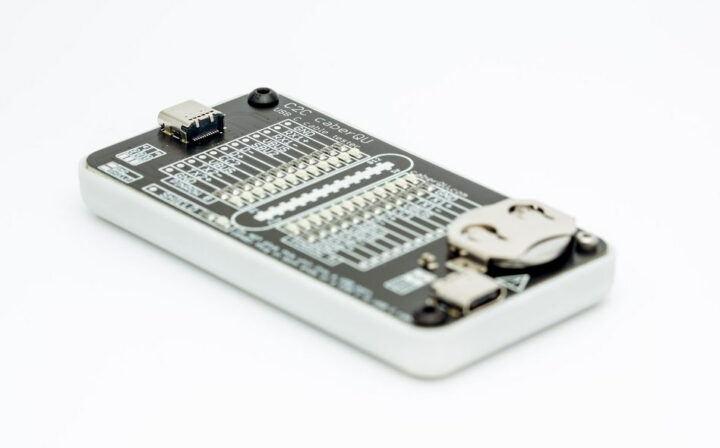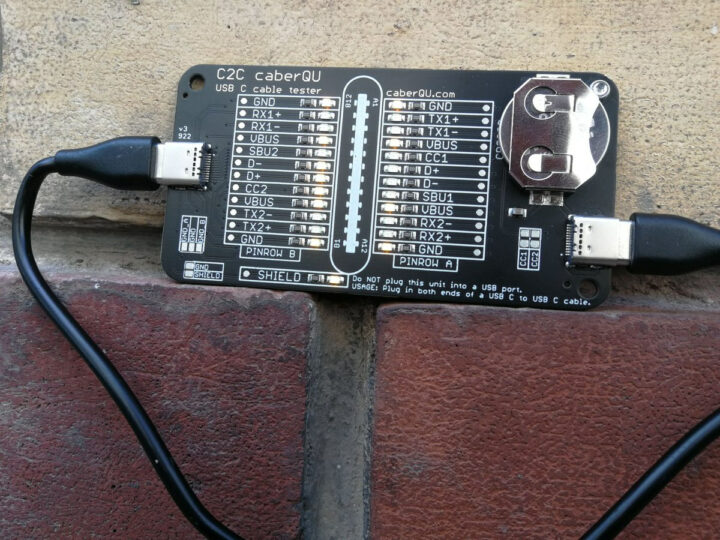The A2C caberQU and C2C caberQU boards enable the quick and easy testing of respectively USB-A to USB-C and USB-C to USB-C cables without external hardware. Powered by a CR2032 coin cell battery, the boards apply a voltage to all pins of a cable and measure which ones are connected to the other end. The results can be visualized immediately through various LEDS on the board.
The C2C caberQU board comes with a dedicated LED for each of the 24 USB pins and the shield, and it’s possible to test the USB Type-C to USB Type-C cable in several different modes:
- USB 2.0/1.1
- USB Power Delivery
- USB 3.0/3.1/3.2
- Alternate Mode
- Debug Accessory Mode
- Audio Adapter Accessory Mode

The A2C caberQU board has fewer pins and LEDS for testing USB-A to USB-C cables specifically, but it works the same way. Peter Traunmüller (aka petl) has shot a video showing one of his A2C caberQU in action. It just takes a couple of seconds to find out the capabilities of a cable.
So depending on the selected board, you can quickly test whether USB-C cables support features such as data transfer (D+/D- connected), USB PD, Alternate mode, and so on. It can also help determine whether a previously-working USB cable is damaged and which wire is to blame.
Both boards are available on Tindie for $29.90 (see C2C and A2C pages) and ship with a CR2032 battery. The enclosure is optional and adds $10 provided it’s in stock…
Via Hackaday

Jean-Luc started CNX Software in 2010 as a part-time endeavor, before quitting his job as a software engineering manager, and starting to write daily news, and reviews full time later in 2011.
Support CNX Software! Donate via cryptocurrencies, become a Patron on Patreon, or purchase goods on Amazon or Aliexpress







It’s a cool idea. Simple and efficient, at least to detect power-only cables. IMHO they should have used different colors (red & green) for power and optional signals to help instantly figure what is missing. I was thinking that it’s missing a shortcut detection, but it’s rare in USB cables. Also if it happens it will almost always be between adjacent pins and that can be resolved by using inverted polarities every two pins, which should result in powering off the two shorted pins.